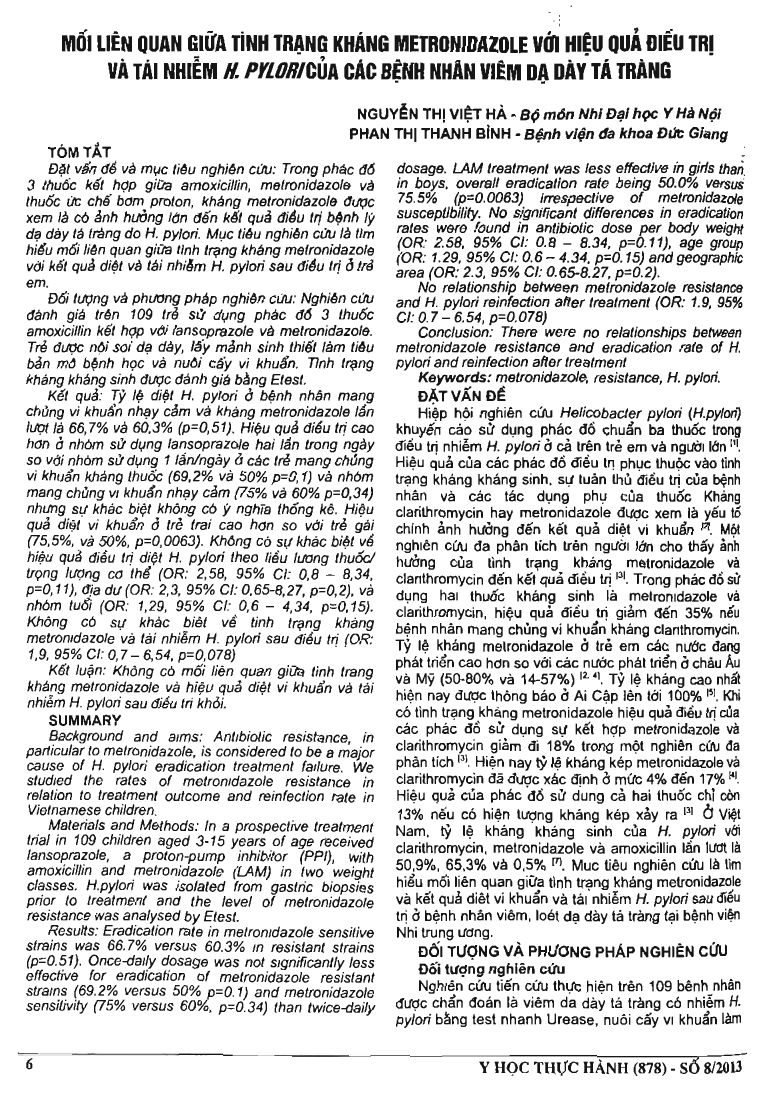
Background and aims: Antibiotic resistance, in particular to metronidazole, is considered to be a major cause of H. pylori eradication treatment failure. the authors studied the rates of metronidazole resistance in relation to treatment outcome and reinfection rate in Vietnamese children. Materials and Methods: In a prospective treatment trial in 109 children aged 3-15 years of age received lansoprazole, a proton-pump inhibitor (PPI), with amoxicillin and metronidazole (LAM) in two weight classes. H.pylori was isolated from gastric biopsies prior to treatment and the level of metronidazole resistance was analysed by Etest. Results: Eradication rate in metronidazole sensitive strains was 66.7 percent versus 60.3 percent in resistant strains (p=0.51). Once-daily dosage was not significantly less effective for eradication of metronidazole resistant strains (69.2 percent versus 50 percent p=0.1) and metronidazole sensitivity (75 percent versus 60 percent, p=0.34) than twice-daily dosage. LAM treatment was less effective in girls than in boys, overall eradication rate being 50.0 percent versus 75.5 percent (p=0.0063) irrespective of metronidazole susceptibility. No significant differences in eradication rates were found in antibiotic dose per body weight (OR: 2.58, 95 percent CI: 0.8 - 8.34, p=0.11), age group (OR: 1.29, 95 percent CI: 0.6 - 4.34, p=0.15) and geographic area (OR: 2.3,95 percent CI: 0.65-8.27, p=0.2). No relationship between metronidazole resistance and H. pylori reinfection after treatment (OR: 1.9, 95 percent CI: 0.7- 6.54, p=0.078). Conclusion: There were no relationships between metronidazole resistance and eradication rate of H. pylori and reinfection after treatment
- Đăng nhập để gửi ý kiến
